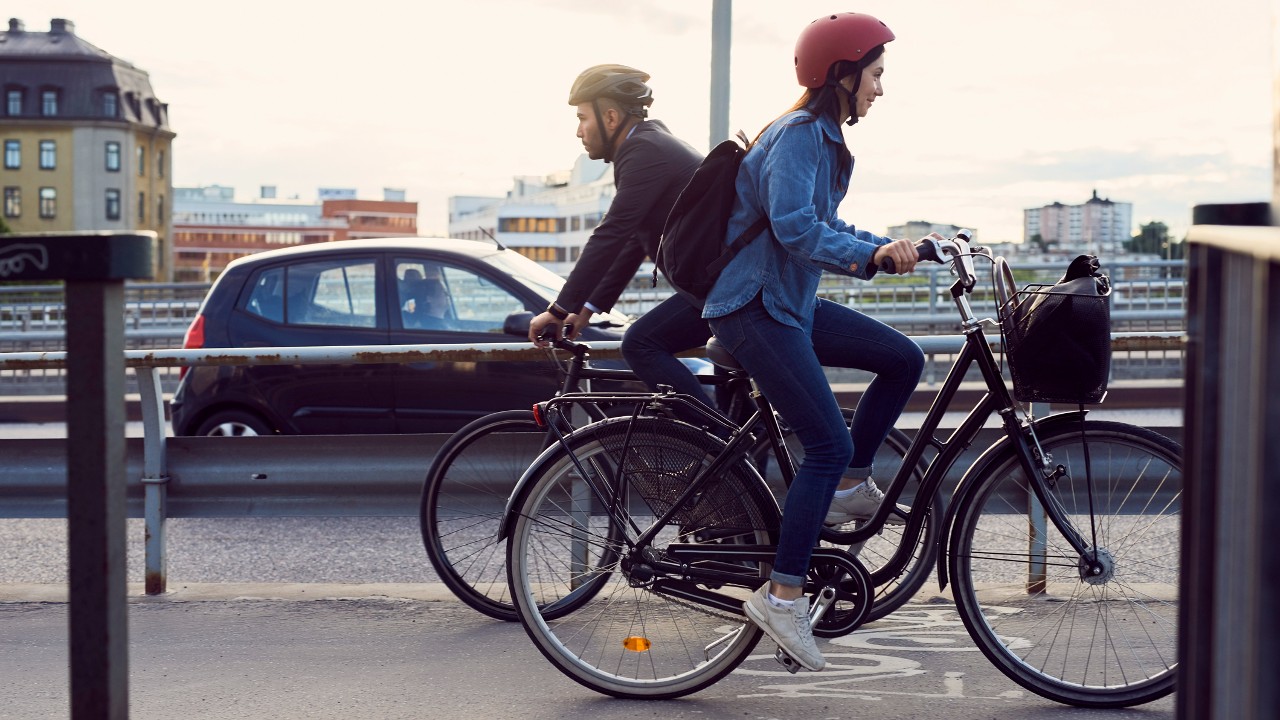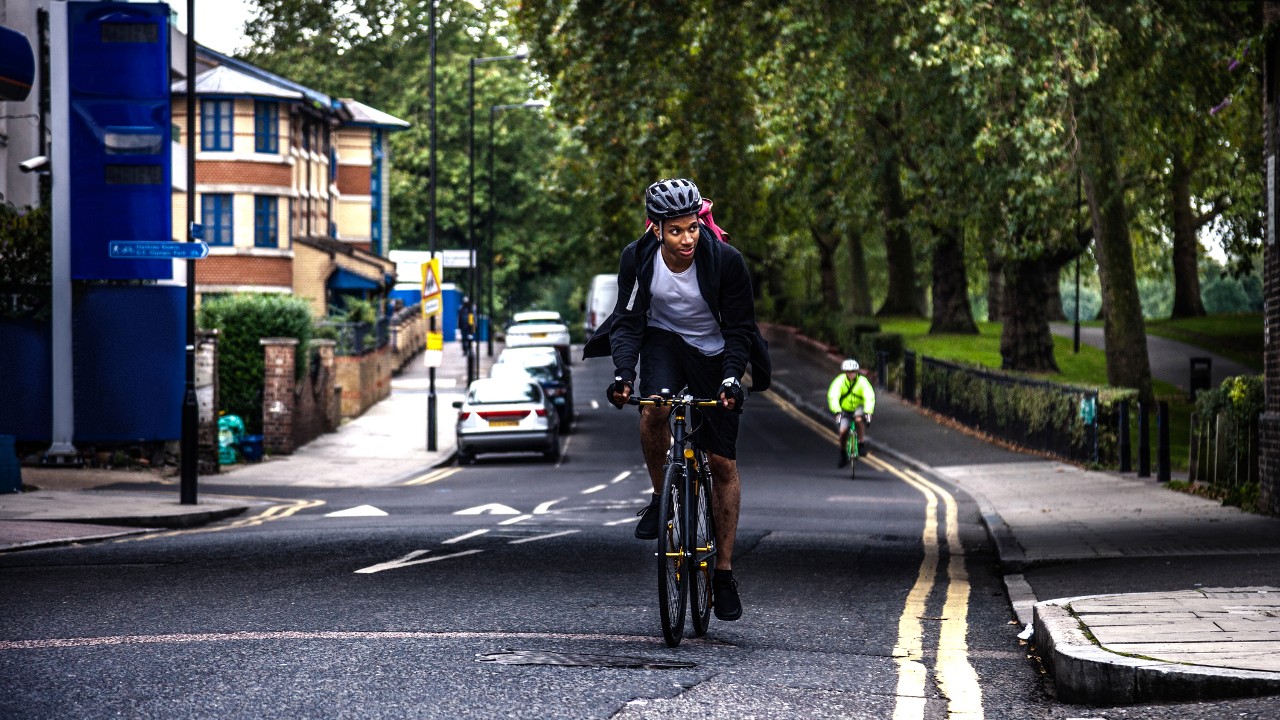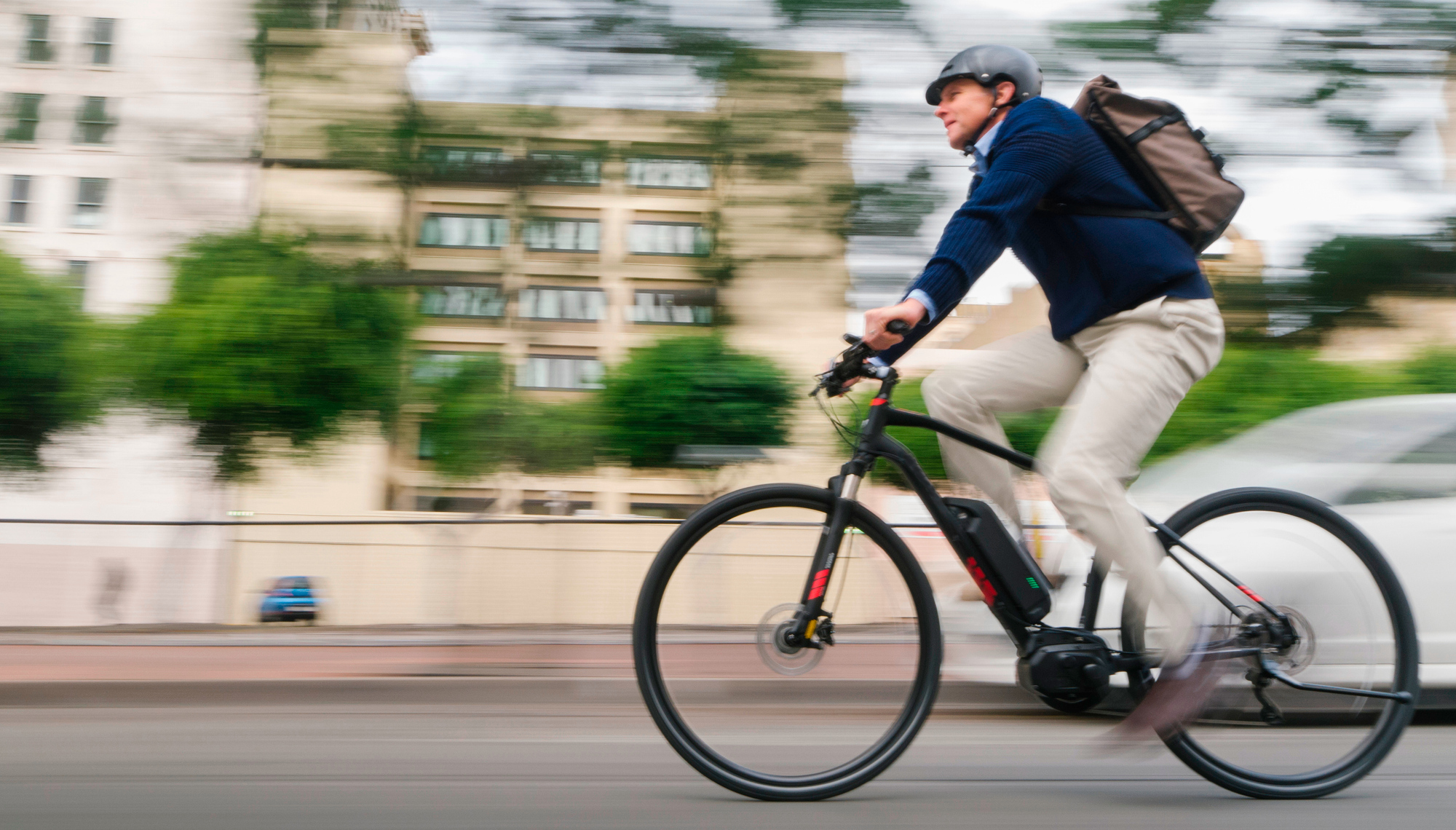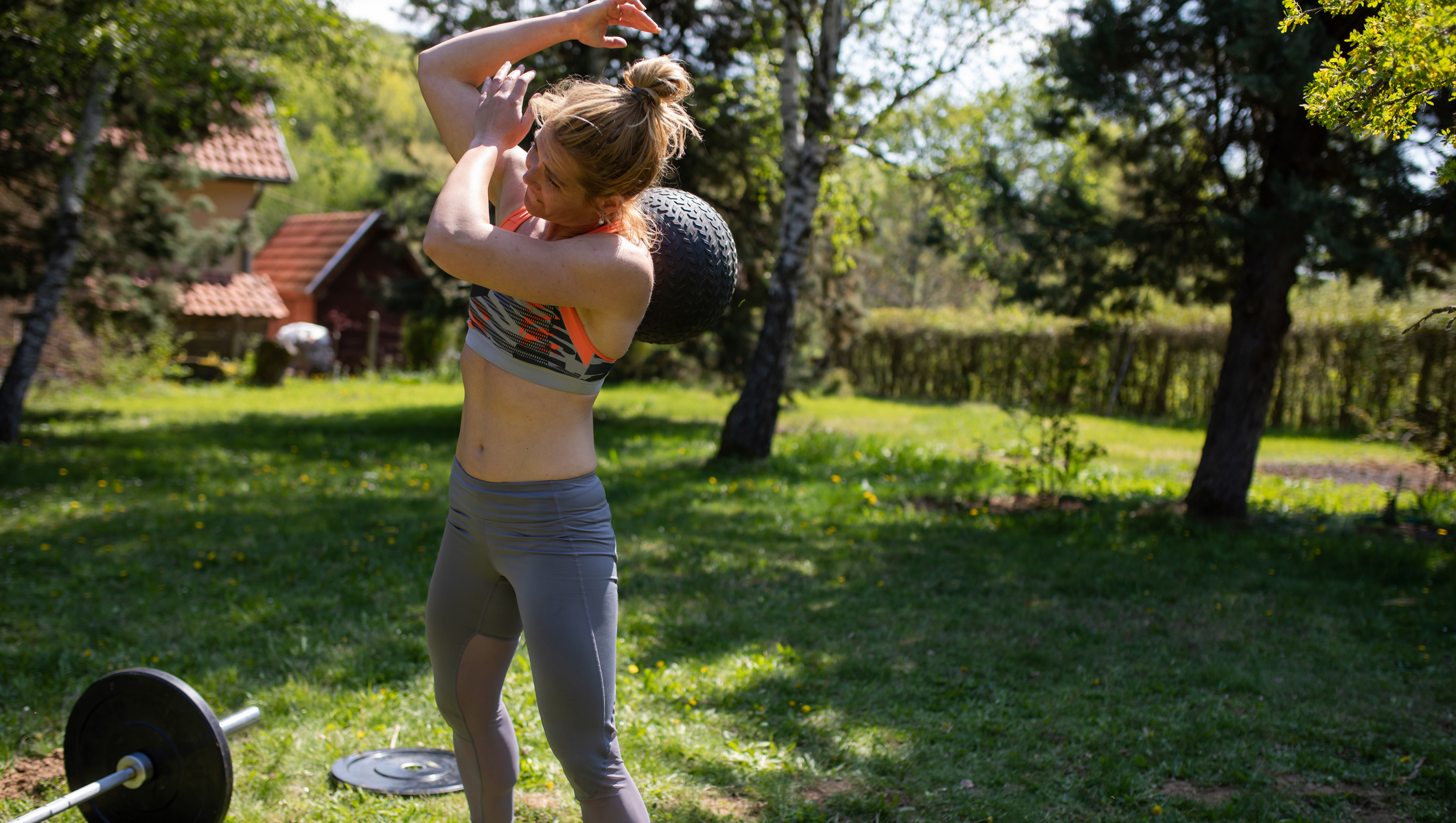Everything You Need To Know To Start Cycling To Work
Advice, tips and gear recommendations to help you start cycling to work

The great return to work after COVID-19 has made one thing clear – commuting isn’t a great way to spend your time. And what’s more, it isn’t cheap, whether you drive or rely on public transport. With fuel prices and fares on the up, it’s only going to get more expensive. Fortunately, there is a cheaper alternative if you can’t walk to work – cycling. If you live within riding distance of your place of work, the upfront cost and minor maintenance charges of commuting by bike are small compared with going by car or buying a season ticket.
Cycling on the UK’s roads can feel like an intimidating prospect, especially because cyclists remain a minority. According to the latest National Travel Survey, only 3% of trips were taken by bike in England in 2020 – and this during the first wave of the pandemic and a cycling boom.
It doesn’t have to be this way and it won’t be for long. In 2020, the government announced £2bn in funding for cycling and walking infrastructure, and the impact of this investment is already visible in towns and cities around the country. Changes in early 2022 to the Highway Code also give cyclists a higher priority on the roads. The result will hopefully be a linked-up infrastructure and a shifted attitude towards cyclists that will create a more welcoming, Dutch-influenced environment on the roads for bikes.
We’ve enjoyed the benefits of cycling to work for years and are keen for more people to experience them, so we’ve collected expert advice to answer some of the common questions people have before trying a bike commute. From riding safely in traffic to how to lock your bike properly when you arrive at the office, below is a complete guide to the most enjoyable, healthy, environmentally friendly, and speedy way of getting to and from work.
What Are The Benefits Of Cycling To Work?
“Cycling to work is a great way to include exercise in your weekly routine, without the need for expensive gym memberships or a personal trainer,” says Luke Harper, who was previously head of the British Cycling partnership at HSBC UK. “You get to work feeling invigorated – endorphins are flowing around your body and you start the day off on a natural high.
“A bike is also cheap to buy compared with a car, particularly with so many employers taking part in the Cycle To Work scheme, and it is much cheaper to run. In many UK cities there are also bike-sharing schemes [such as Santander Cycles in London and Beryl in the West Midlands] which make using a bike easy and affordable.
“There are numerous benefits to cycling but, perhaps most of all, cycling is fun. Most of us learned to cycle as a child when it was an activity that provided a sense of freedom.”
Get the Coach Newsletter
Sign up for workout ideas, training advice, reviews of the latest gear and more.

Commuting under your own steam can also improve concentration and reduce stress levels, according to an analysis of 18,000 British commuters published in the journal Preventive Medicine. The research also found that “the longer people spend commuting in cars, the worse their psychological wellbeing”.
We’d also suggest that for most people in cities cycling to work will be at least as fast as taking public transport, even if you’re pootling along at an easy pace, because you can pick a more direct route, there’s no walking to or from a station or bus stop and no waiting, and the only unexpected delay you might experience is a flat tyre.
Finally, commuting by bike ticks the environmentally friendly box too. According to research by Oxford University, replacing just one car journey a day for one on a bike each day reduces an average citizen’s carbon emissions from transport by 67%. As more people look into how they can do their bit to stop the climate crisis getting any worse, it’s a practical way to make a difference.
How Much Does Cycling To Work Cost?
While there’s no direct cost each time you saddle up to get to and from the office, cycling to work isn’t free. The biggest cost is the bike. A reliable set of wheels that’s suitable for commuting is likely to set you back a minimum of £300, but there are ways of spreading this cost interest-free through initiatives such as the Cycle To Work scheme.
Alternatively, it’s possible to pick up a bike second-hand on eBay, Gumtree or Facebook Marketplace for less than a new one, although it’s important to remember that there are no guarantees when buying a used product. Be on the look-out for a local company or scheme which wants to improve access to bikes – Peddle My Wheels in London is a good example.
Bike sorted, there are accessories you might want to consider – a helmet, lights, a rucksack, or pannier – but these aren’t essential (apart from the lights, which are required by law if cycling on the road after dark).
When compared with public transport or driving, it soon becomes quite clear that cycling is a much cheaper alternative. Plus, with all the money you’ve saved on fuel or fares, you’ll be able to upgrade your cycling wardrobe to include a jacket, gloves and maybe even a cycling jersey.
How Far Is Too Far To Cycle To Work?
Ultimately, this is down to the individual. Some people will ride 20-plus miles each way to get to work, whereas others would consider 10 minutes a bit of a stretch. It’s all down to what you’re comfortable with riding, and it’s important to remember that you’re going to have to do the same journey at the end of the day too.
If you’ve never ridden to work before, attempt a leisure ride at the weekend and see how long you can easily ride for (both in terms of distance and duration). Less than the distance to work? You’re good to go. Is work still too far away? You can always combine cycling with public transport (eg cycling rather than driving to the station) or gradually build up to the distance until you think you can confidently complete the ride to work without getting too tired.
Is Cycling To Work Dangerous?
“Our perceptions of the dangers of cycling far outstrip reality,” says Harper. “For many of us, these are mental barriers which prevent us from getting on two wheels.”
There are stats to back this up too. According to Cycling UK research, only one cyclist is killed for every 29 million miles covered by bike on British roads, and mile for mile the risk of death is about the same as walking. Furthermore, cycling is so good for your health that statistically speaking, the years of life gained outweigh the years lost through injuries by around 20:1.
If you’re still on edge, there are courses on offer regardless of age – and best of all, they’re free. Bikeability and Bikeability Scotland will show you what’s available in your area.
There are a few key safety tips to bear in mind. The first is to build or regain confidence before commuting. “If you’re nervous about riding to work, there are ways to build your confidence including doing practice runs during the weekends when there’s usually less traffic, which will help you to familiarise yourself with the route,” says Harper. “Riding a bike recreationally around your local park or on national cycling routes can help you relearn the skills or techniques that may be rusty, and help to boost your confidence before using the roads.”
One of the key things to master is hand signalling so that you can communicate with other road users. This will require you to be able to confidently ride one-handed, while the ability to look over your shoulder to check behind you and make eye contact with drivers is another crucial skill.
Ultimately, while cycling to work can often be the fastest way to the office, it’s important to keep your wits about you, anticipate that any car or pedestrian could suddenly cut across your path and practise extra caution in the wet.
Do You Need Insurance?
There’s no legal requirement, but liability insurance might be useful. The easiest way to cover yourself is to join one of the two major national cycling organisations – British Cycling and Cycling UK. Both offer members liability cover, up to £15m and £10m respectively, if you’re in the wrong and legal assistance for third-party claims if you’re not.
British Cycling offers a Commute membership for £40 a year; the Ride membership is £4 more but includes cover and legal assistance for leisure cycling too, rather than just when commuting. Cycling UK’s adult membership is £4 a month (or £48 for the year). Both organisations offer discounts and freebies from many retailers and advocate cyclists’ interests. If your budget can stretch to it, joining one is well worth it.
What Type Of Bike Is Best For Cycle Commuting?
Any type of bike will do the job, but generally, people lean towards hybrid bikes for commuting because their upright position affords a better view of the road and gives a greater sense of stability. These can also take racks and panniers so you don’t have to cart everything around in a backpack. As with anything in life, you can spend as much as you want, but Ollie Glover, bikes expert at Halfords, says, “generally, £300-£700 will get you something reliable, sturdy and hopefully less of a target for thieves.”
Folding bikes are also a good option if you have to store your bike inside and you live in cramped quarters, or if you have to do part of your journey on public transport. They’re not as well suited to long journeys because of the smaller wheels and slightly cramped riding position, however – we found them unsuitable for our 40- to 50-minute London commute – and they typically cost more than hybrids because the ability to fold makes the design and construction more complex.
If you can afford it, the best option is an electric bike. E-bikes are a godsend as they do much of the work for you, offering power assistance at speeds up to the legal limit of 25km/h. This means that you can wear your work clothes on the bike knowing you won’t have to break a sweat, especially if you get a model with a belt drive, which uses a greaseless rubber chain. The cheapest e-bikes are in the region of £1,000, although we’d recommend spending at least £2,000 to get a model with a natural feel when you pedal.
Whichever type you go for, make sure to look into paying for it using a Cycle To Work scheme before you hand over the cash. It’s a somewhat complicated process, but in essence, the cost of the bike (and any accessories) is deducted from your pre-tax salary over the course of a year, a tax break that means you save money on the bike.
How Should You Dress To Cycle To Work?

Although a lot of cyclists do wear workout gear or even Lycra to get to the office, it’s not essential. The upright position of a hybrid bike means you get quite a good airflow once you’re on the move, so what you’d wear to the office is suitable for most – although it’s worth starting off with one layer less than what you’d wear normally because you’re going to get your heart pumping.
Find you still break into a sweat? Many people cycle in technical sportswear and carry a change of clothes in a cycling backpack – some bags are even designed to carry a suit, shirt and shoes without creasing them. Alternatively, a cycling jersey will help keep most of the sweat at bay because its lightweight, sweat-wicking materials make a real difference.
Do You Need To Wear A Helmet?
There is no law saying you have to wear a helmet in the UK although it’s more common than not. Cycling campaign groups are very active in opposing any attempt to introduce such a law. The argument is simple: enforced helmet wearing leads to fewer people cycling and the best way to make cycling safer is to have more people doing it. Plus, the evidence that helmets lead to better outcomes in the round is surprisingly slight.
Regardless of the legal requirements, you may well choose to wear a bike helmet. They can save your life in some types of accident, although you shouldn’t expect them to do a great deal if you’re hit by a motor vehicle. Our guide to the best bike helmets explains all, including how often you need to replace them because they degrade over time.
Do You Need Bike Lights?

Outside daylight hours, yes. The minimum requirement under UK law is that you have one front light, one rear light, one rear reflector, and reflectors on your pedals. The lights can flash, but this must be between 60 and 240 times per minute. There are some more detailed regulations about the amount of light emitted, but any lights bought via a UK store will be street legal.
It’s worth reading up a little more on bike lights to get the right kind: for example, very bright lights suitable for pitch-black country roads have the habit of blinding your fellow riders in a city. Our guide to the best bike lights for commuters goes into more depth.
How Can You Stop Your Bike Getting Stolen?

Ultimately there is no surefire way to ensure your bike never gets nicked, but you can massively reduce the chances.
Before you head out the door, register your ride at bikeregister.com, record your frame number and any other key details like your bike make, colour and any unique identifiers. You can also attach a coded label or ultraviolet marking to your bike to help identify it and deter thieves – the police often have events where they’ll do this for you for free. Try searching your local police service’s website.
When it comes to your bike lock, don’t skimp. Locking a £1,000 bike with a £10 lock is not a savvy move – a general rule of thumb is to spend 10% of your bike’s price on a lock, but it’s possible to buy a Sold Secure Gold-rated lock (more on which below) for less than three figures. In an ideal world, you’ll always have a secure indoor location to park your bike, at least at work and at home, but you also need at least one lock when you do have to store it outside.
Sold Secure, a not-for-profit company run by the Master Locksmiths Association, rates locks as Diamond, Gold, Silver or Bronze, with the standards relating to the tools and time taken for a thief to compromise the lock.
Where and to what you lock your bike is almost as important as the lock itself. Always make sure you’re locking your bike to something solid and fixed – and make sure it’s not a short pole that a thief can lift your bike over, lock and all, and carry it away! Top priority is to lock your frame because it’s the most expensive part of your bike, then the back wheel (ideally the frame and back wheel can be locked in one go), then the front wheel. If you have quick-release wheels, a lock for each is needed, because skilled thieves can pop off the wheel in a matter of seconds. The less space between the lock and your bike the better, because that leaves less room for thieves to manoeuvre against the lock.
Charlie Allenby is a journalist with a passion for pedalling. He contributes features and buying advice about cycling, and is Coach’s dedicated turbo trainer reviewer. He is also Coach’s chief whey and casein protein powder tester, trying as many brands as possible.
Charlie’s first book, Bike London, is out now. He has written for The Guardian, The Independent and BikeRadar, among others.
- Jonathan ShannonFormer editor










